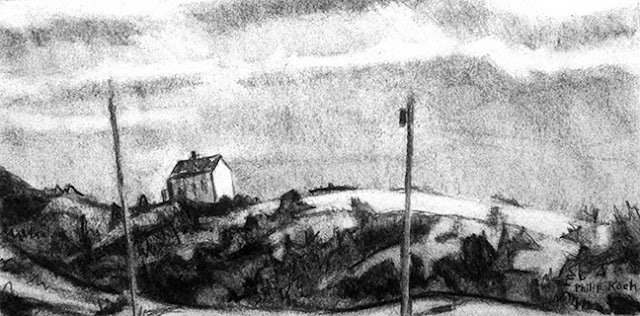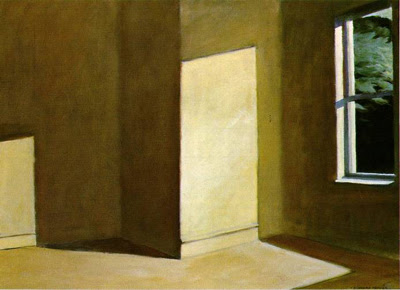Sorting

Philip Koch, Deer Isle, oil on panel, 36 x 72" 2008
This painting is going off tomorrow morning to the Maryland Institute College of Art's annual Faculty Exhibition. It's a large studio interpretation of a small plein air oil I did in Maine last summer (featured in my Sept. 2 post).
The Faculty Exhibition is always my favorite of MICA's shows, only partly because I'm often in it. It's got a bunch of traditional oil painters who are usually pretty darned good, and of course also a grab bag of video, conceptual, multimedia, etc. artists. All are stacked together in the galleries elbowing each other in hopes of grabbing the viewer's eye. It has all the decorum of an old fashioned circus sideshow but that's part of its charm.
Can artists of one medium or discipline be good teachers to a student artist who is pursuing a far different direction? My answer, based on listing in on many many group critiques over the years, is yes. Not that I haven't heard absolutely screwball ideas given to students by teachers. At least some of the white hairs on my scull sprouted after hearing what I thought to be terrible advice.
In my own education as a painter I had all sorts of instruction, most of it at least well-intentioned but some of it truly excellent. One of the best experiences of all was studying figure painting at the Art Students League of New York in the summer of 1969 with Rudolf Baranik.
Baranik was an interesting fellow. A Lithuanian immigrant, his socialist parents had been killed by the Nazi's during WWII. He himself was an abstract painter who had gained some notoriety for his series of anti-Vietnam war paintings called Napalm Elegy. They were grim images of children burned horribly by US bombs but done in an over all abstract expressionist vein that owed much to Ad Reinhart and Mark Rothko. In short, he wasn't an obvious choice to teach a traditional figure painting class.
I will never forget the first time he spoke to me about my paintings. I had painted a model resting her head on her hand at a table. Though African-American, she looked light against a dark back wall. He came by and told me to lighten the shadow under her arm and breast. I looked again at these spots on the actual model and they were dark as night. I wasted no time in pointing this out to Baranik. He smiled and slowly moved up close to the easel. Cupping his hands together just over the painting's head, he traced them down and to the outside forming a giant pyramid. "See the great composition your eye was drawn to. If you lighten up those two shadows, you'll keep them from interrupting the pyramid." Then just nodded and walked away.
I was more than skeptical as so far the painting was by far the most "realistic" figure I'd managed and I was loath to screw it up. But I cautiously started inching the shadows lighter and then, as it seemed to be working, lighter still. To my amazement, the woman in the painting took a deep breath and came to life. You could have knocked me over with a feather. I realized that this Baranik fellow had a heck of a good eye. His own paintings were far from the sort I wanted to paint, but his advice had put wind in my sails. He was teaching me that a painter has to approach his subject indirectly sometimes to get the painting's personality to come out and show itself. The majority of the critiques I received from him that summer involved not how to paint the figure but rather the back wall. I learned from all of it.
Some of my colleagues at MICA do work that confuses me, I confess, as perhaps mine does them. But I know that many of them possess an eye for painting. Some very good works come out of their classes. Being an art student is not without peril. Of course sometimes you will receive some pointless feedback on your work if not outright destructive suggestions. Learning to paint, like painting itself, is about sorting out what works for you and what doesn't. Might as well start sorting.


